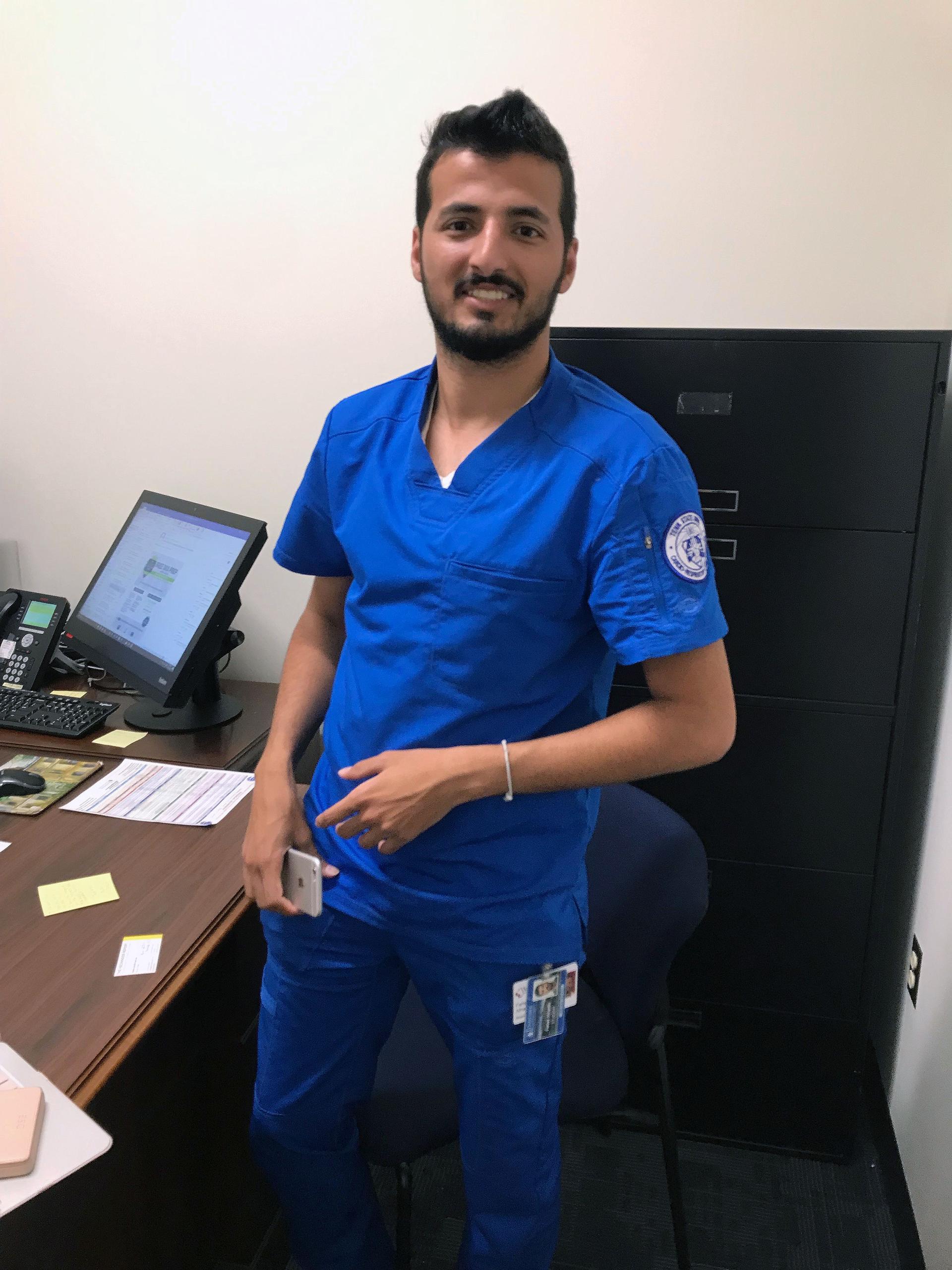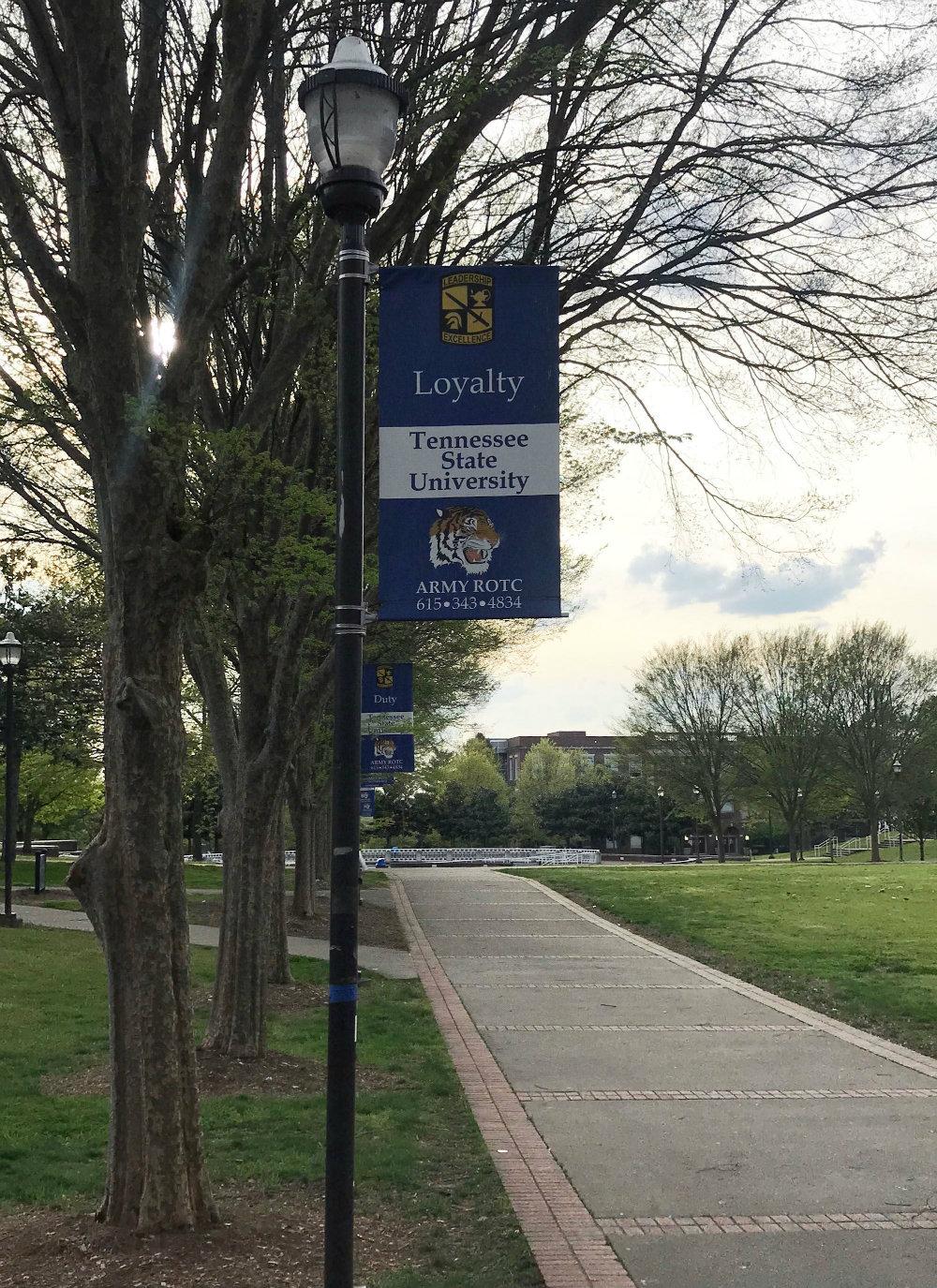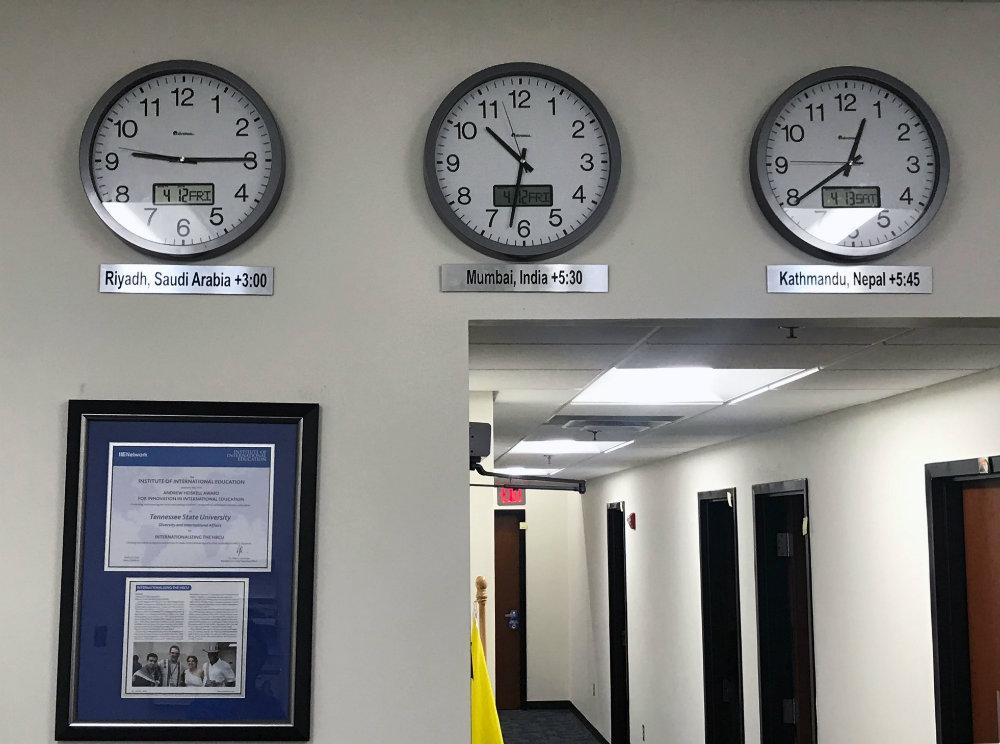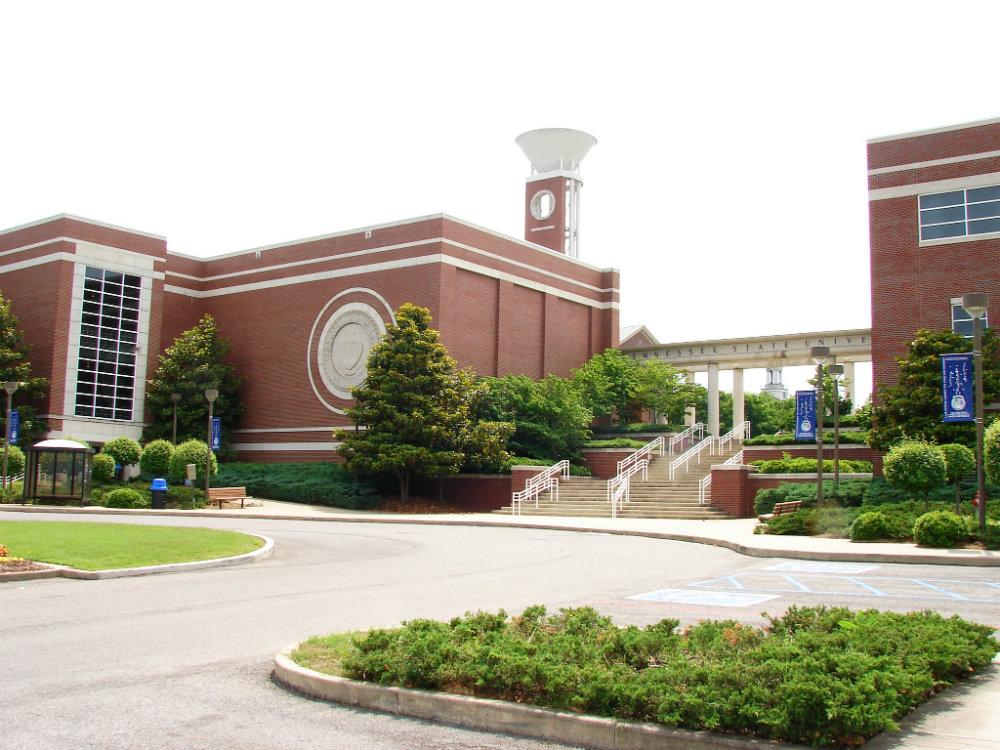HBCUs throw open the doors for international students
According to the Institute of International Education, Tennessee State is among the top three HBCUs in the country with the mot international students in the 2017-18 academic year.
When Fahad Alharthi traveled from Saudi Arabia to southern California in April of 2015, by himself at 20 years old, he knew no English. But he did have a scholarship guaranteed by the Saudi Arabian Cultural Mission, to use to learn English and then attend a US college.
Over 18 months, he lived with American host families and friends, studied English at a language school and at California State University, Long Beach, and took the International English Language Testing System exam. On a scale of 0 to 9, he scored a modest 5, but he was accepted at three colleges.
Alharthi chose Tennessee State University in Nashville, a historically black university — where his classmates are black Americans, Egyptians, Kurds and Somalis as well as other Saudis.
In 2008-09, Tennessee State had 77 international undergraduate students. By the fall of 2016, the year before Alharthi enrolled, it had 549 — 8% of its undergraduate student body of about 7,000. Other historically black colleges and universities (HBCUs) are sparking similar rapid growth in their numbers of international students — for the same reasons.

In addition to the tuition money they often bring — many foreign students pay the full sticker price, often aided by their home countries’ governments — there are benefits for the HBCUs’ American students. Many are from low-income families and cannot afford study-abroad programs. Having international classmates exposes them to cultures very different from their own. Also, when they graduate, they will join an increasingly globalized workforce, and could benefit from understanding the perspectives of their international peers.
“It is important to have different cultures on a campus because we can’t send all of our students to study abroad, so we find unique ways to bring the world to them,” said Jewell Winn, executive director for international programs at TSU.
The spike in international students is also happening at Morgan State University in Baltimore and Howard University in Washington, D.C. — institutions similar in size to Tennessee State — and at some smaller HBCUs, like Central State University in Ohio.
Among HBCUs with 10 or more international students, as of the 2017-18 academic year, Morgan State had the most, with 945 students; Howard was second with 920; and Tennessee State third with 584, according to the Institute of International Education. The three campuses are similar in student population as well as size — at least 70 percent of their students are African American and about half receive federal Pell Grants (usually given to undergraduates whose household income is less than $40,000).
But those demographics are changing, as more foreign students bring their languages, clothing and customs to majority-black schools. And while some African American students question whether the culture of their campuses is changing too much, others welcome the chance to interact with foreigners.
As Tennessee State’s Winn pointed out, “When they leave this campus of an HBCU, they’re not going to work at an all-black Nissan or an all-black Deloitte or anything like that. It’s going to be a very diverse workplace.”
Related: With white students becoming a minority, public universities push harder to diversify
The influx of foreign students to HBCUs includes a large number from the Middle East, thanks in part to government-funded scholarships. Indeed, Saudi Arabia is fourth among the top places of origin for international students in the US, according to the Institute of International Education. (China is No. 1, followed by India and then South Korea.)
“Having an international student who is fully funded, whose government guarantees their tuition, is the best-case scenario for any university trying to attract a student who pays out-of-state tuition,” Yacob Astatke, Morgan State’s assistant vice president for international affairs, explained. In many cases, the foreign government pays full-fare room and board costs as well.
An out-of-state student from California, however, might still need financial aid from Morgan to cover some of the cost. With every out-of-state student the university tries to attract, Morgan has to think carefully about how much aid it is willing to give them. Not so with international students whose tuition payment is guaranteed — “a big plus for our institution,” he said.

Astatke said Morgan State’s president, David Wilson, focused on boosting the international student numbers, and that between 2014 and 2017, international enrollment tripled, from about 300 to 900 students — “mainly from Saudi and Kuwaiti students,” he said.
Morgan recruits through the Saudi Arabian Cultural Mission scholarship, and also hosts meetups for Saudi students from colleges throughout the D.C.-Baltimore region. Most of its international students study engineering; the university recently increased the number of engineering classes offered during the summer to help international students graduate within their scholarships’ timeline.
“In the last five years, we have offered more summer classes than the last 20 years combined,” Astatke said.
In Saudi Arabian culture, there has been a push for citizens to become more educated, in general, and to obtain a more Western education, in particular, said Marybeth Gasman, the director of the Rutgers (formerly Penn) Center for Minority Serving Institutions.
“Once word gets out about an institution, and if students are having a good experience, then I think that you’re going to get more people attending,” Gasman said. “Those kinds of communities of who goes abroad are fairly small in other countries. And they’re very connected.”
At Tennessee State, where many Saudi students get the government scholarship that Alharthi got, their numbers grew so large that in 2017 the Saudi Arabian scholarship program stopped sending students to TSU, Winn said, fearing that living among so many fellow Saudis could dilute their English-immersion experience. (But in April, the scholarship program allowed its students once again to apply to TSU.)
Related: After colleges promised to increase it, hiring of black faculty declined
Other historically black colleges are beefing up resources and increasing staff to better recruit international students, which often involves a little bit of luck.
In 2016, the vice chancellor of a two-year college in Nigeria, who was an alumna of Prairie View A&M University in Texas, asked Prairie View’s president, George Wright, to come to Nigeria and speak at graduation. Wright used the visit as an opportunity to recruit, taking a handful of Prairie View school leaders with him.
Prairie View has since had a surge in Nigerian student enrollment, from 47 in the fall of 2015 to 106 in the fall of 2017, according to Eveadean Myers, executive director for international programs. The university’s overall international enrollment grew from 184 students to 279 from fall 2013 to fall 2017.
The university is establishing partnerships to continue to boost the number of students from abroad, according to Myers.
In March, Prairie View signed a memorandum of understanding with Equatorial Guinea’s Ministry of Mines and Hydrocarbons, under which the ministry will help Prairie View recruit and enroll students from the small West African nation.
Prairie View has about 8,000 undergraduate students, more than half from low-income families; the vast majority are African Americans from Texas. Thanks to the international recruitment, “They are getting exposed to different cultures,” said Evelyn McGinty, international student advisor at the university.

Fisk University in Nashville is recruiting in Nigeria, having hired a dean of global initiatives in 2017. About 3% of its undergraduates come from abroad. At Southern University in New Orleans, only 1% of undergraduates are from overseas now, but the school is actively working to increase that number. In 2018 and 2019, school leaders and students recruited in Australia and Israel. Central State University, in Wilberforce, Ohio, forged a relationship with the Bahamas Ministry of Education after its football team played a game in the Bahamas against another HBCU in 2014. “We always are trying to increase our enrollment numbers, like most universities,” said Maria Potter, program coordinator for the university’s Center of Global Education.
At Tennessee State, the administration started working on international enrollment in 2011. Today, its international students find a campus of about 500 urban acres, with hills at almost every turn on the walk from the campus center to the wellness center, or along the plots of land adorned with Greek letters to honor black fraternities and sororities. It’s in a hub for African American higher education that can take you from a B.A. to an M.D.: Fisk University is across the street, and Meharry Medical College, a historically black institution for health professions, is a five-minute drive away.
Tennessee State is the youngest of the three, having opened in 1912. In 2012, it opened an office for international student enrollment and study abroad opportunities.
This initiative, too, had an element of serendipity. After completing her doctoral research on faculty and administrators of color, Winn started thinking about diversity more broadly.
“I wanted to see if there were other universities who had offices operating at the intersection of diversity and international affairs,” she said.
The school’s interim president at the time, Portia H. Shields, was mentoring Winn, and gave her the green light to put together a central office focused on international affairs, including student enrollment and study-abroad opportunities.
“Trump and his administration have caused a lot of issues for universities across the country. We’re all suffering from the new administration’s rules and possible rules.”
Winn took a grass-roots approach. She would ask international students on campus, “What would it feel like to have more of your friends and family members come to the university?” And she would challenge them, asking them to urge two or three of their friends to come to TSU.
“Well, I didn’t think that was going to happen, but it did,” she said.
After having had great success at increasing its international student population, Tennessee State saw a big drop starting around the fall of 2016. The number of international students fell to 413 people, just 5% of undergraduate and graduate enrollment in the fall of 2018. This mirrored the trend in international student enrollment throughout the US. Between 2011-12 and 2015-16, new international student enrollment grew steadily, from 228,467 students to 300,743. Since fall 2016, it’s been on the decline, and in 2017-18 it dropped to 271,738.
Some higher education leaders attribute that recent decline to Washington politics. In 2017, President Donald Trump issued several executive orders banning most citizens from Syria, Iran, Libya, Yemen and several other countries from traveling to the US. Although the bans were challenged by lawsuits, the Supreme Court upheld the final one.
“Trump and his administration have caused a lot of issues for universities across the country,” Winn said. “We’re all suffering from the new administration’s rules and possible rules.”
Related: How do tensions with the White House impact HBCU diversity?
On campus, HBCUs strive to make international students feel comfortable. They usually host a special orientation and connect the students to faculty and staff members who can help them navigate life on and off campus.
At Tennessee State, the Office of International Affairs is the starting point for students from abroad. Clocks on the office wall show the time of day in cities thousands of miles away, such as Medellín, Colombia; Lagos, Nigeria; and Riyadh, Saudi Arabia. In a horizontal display case, there’s a “Greetings from Ghana” oval plaque decorated in Kente cloth, alongside a feathered headdress, a box decorated in Asian symbols and other international artifacts.
But some students say not all of these changes are conducive for a campus cultural melting pot.
“Sometimes it’s hard for the staff to take care of home first.”
“Diversity is great,” said RoNae Evette Marshall, who graduated from Tennessee State in May, but “sometimes it’s hard for the staff to take care of home first.”
Marshall, a 22-year-old African American from Kansas City, Missouri, entered TSU in 2015 at the height of its international student surge. The Office of International Affairs, she said, can be more helpful to international students than domestic students who want to study abroad, even though its mission is to serve all.
She also said the number of white students on campus has students questioning the HBCU character of the institution. The university is 12% white.
“It’s like almost gentrifying the campus a little bit,” Marshall said.
For the students from other countries, the adjustment is to American culture overall. Some cultural notions have surprised them.
Chukwuebuka “Ebuka” Ajagu, a 22-year-old Nigerian native, joined the African Student Association at TSU, and has attended club events where black Americans and black Africans hold discussions about the differences and similarities in their cultures. At one, Ajagu said students asked if African people run around naked.
“How is this a college and people are still thinking like this?” he later asked.
Upon arrival, one challenge for him was understanding American slang. For example, “Fool” can be a term of endearment, which he didn’t immediately understand.
“The first problem I had was just easy communication,” said Ajagu, a mechanical engineering major.
Related: COLUMN: Diversifying the tech industry, one party at a time
He believes the Office of International Affairs supports students as best it can but has limits.
“They don’t actually do the integration, you know,” Ajagu said. “I think that is left for us to figure out.”
Tennessee State employees are also figuring it out.
A faculty member once told a Middle Eastern student to take off her hijab in class, not realizing the cultural significance of the headwear, Winn said. Another time, she said, a group of Latino students came to visit her office, and another TSU employee assumed the women were maids.
And, she said, some in the TSU community have asked her, “Why are you trying to change an HBCU? We need to help our people.”
“In our culture, and our religion too, we say there’s no difference between colors. We are all human.”
But she stands firm in her belief that a global campus is what’s best for students.
“This is helping our people,” she said. “Internationalizing our campus is helping the domestic black students more than anything.”
Alharthi, now 24 and studying respiratory therapy, said people sometimes ask him why he chose a predominantly black university, but for him, race wasn’t top of mind in the college admissions process.
“In our culture, and our religion too, we say there’s no difference between colors,” Alharthi, who’s Muslim, said. “We are all human.”
His university friends are from Saudi Arabia, Egypt, Somalia and other countries, and many are black Americans.
Alharthi said his sociology class was all black, and he couldn’t have been more comfortable.
“The way they treat me, I loved it,” he said.
This story about HBCU international students was produced by The Hechinger Report, a nonprofit, independent news organization focused on inequality and innovation in education. Sign up for the Hechinger newsletter.
